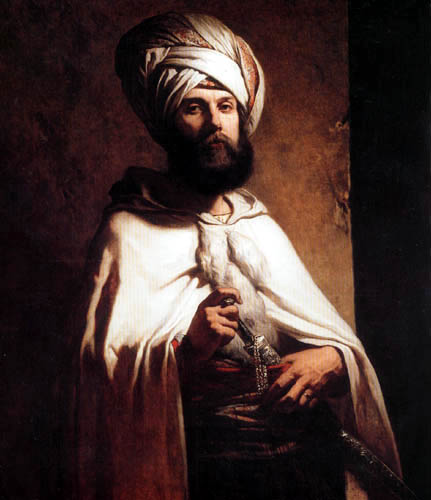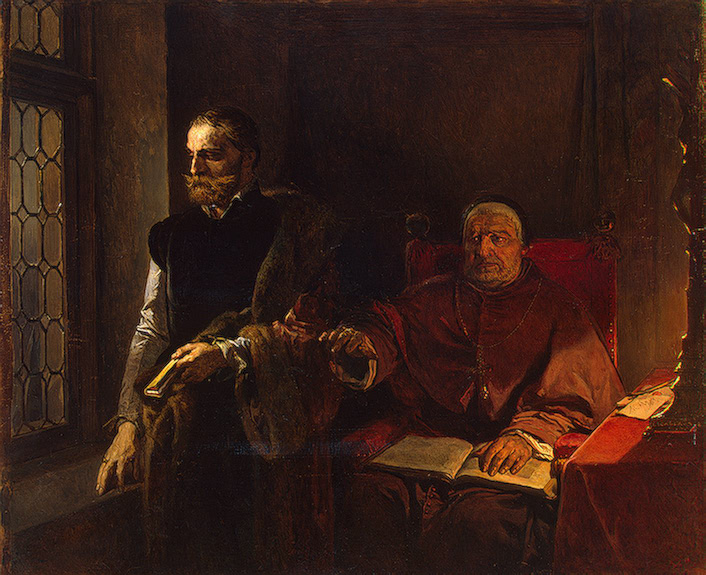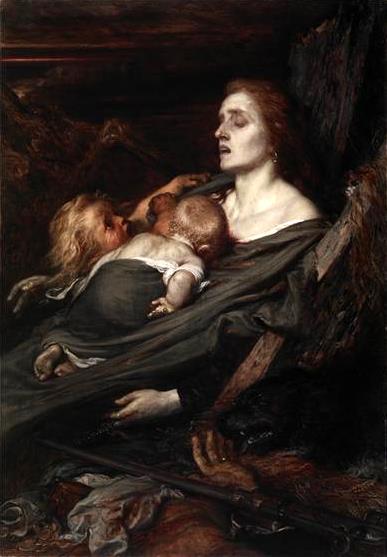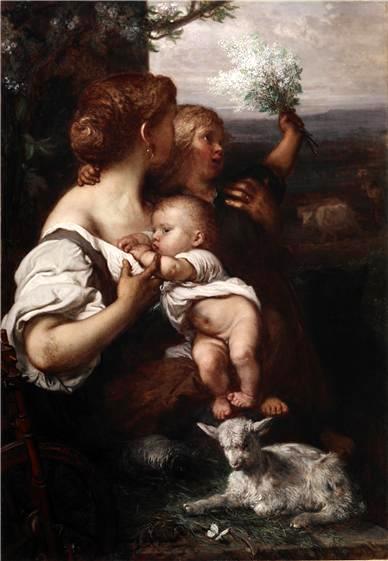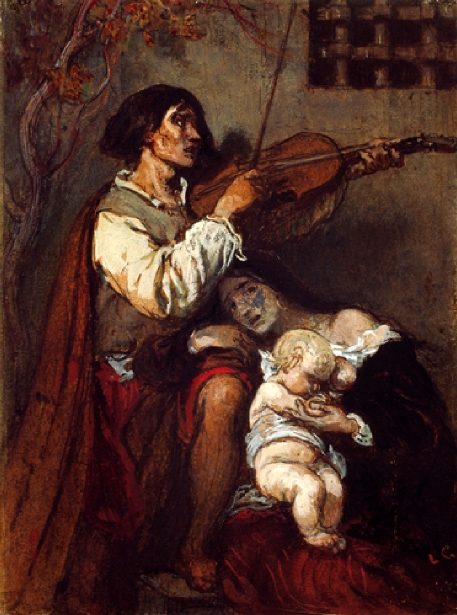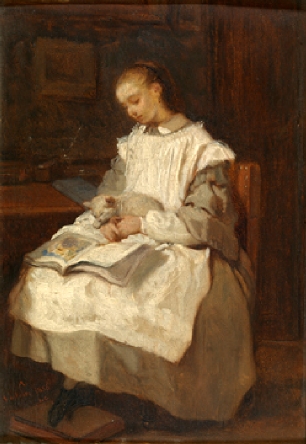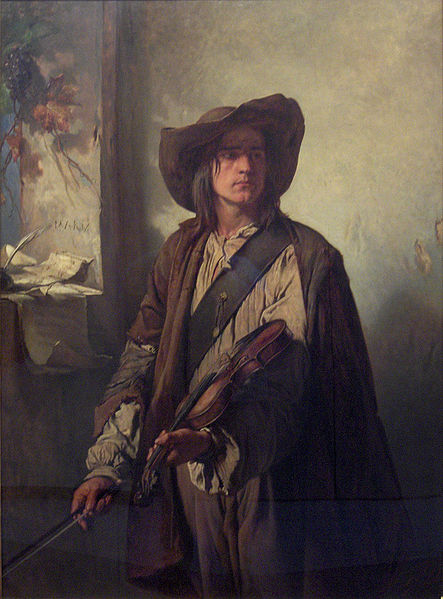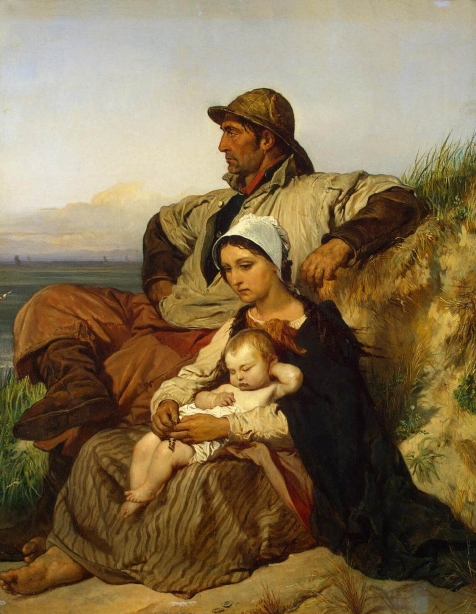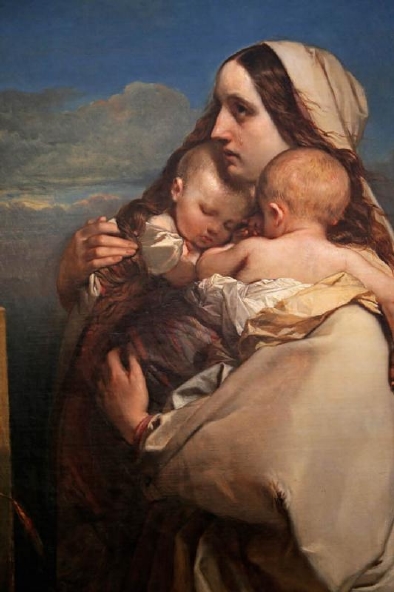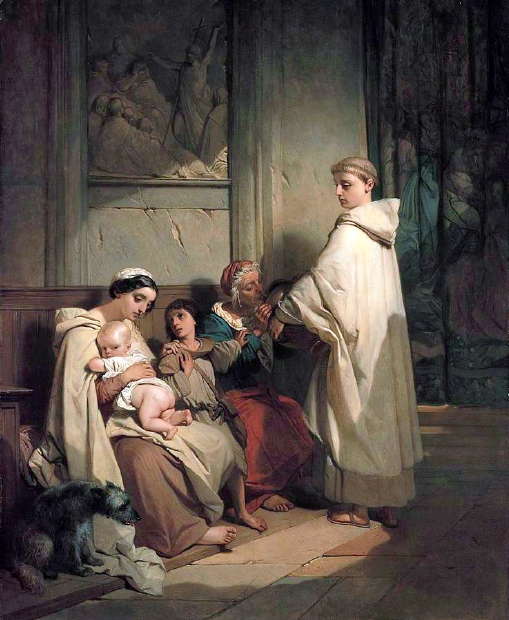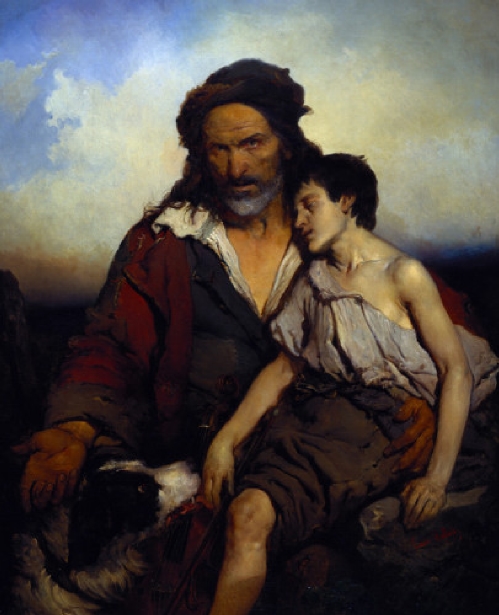<Back to Index>
- Mathematician Gaspard Monge, Comte de Péluse, 1746
- Painter Louis Gallait, 1810
- Attorney General Francis Beverley Biddle, 1886
PAGE SPONSOR


Louis Gallait (May 9 or May 10, 1810 – November 20, 1887) was a Belgian painter.
Gallait was born in Tournai, Hainaut, Belgium in 1810. He first studied in his native town under Philippe Auguste Hennequin. In 1832 his first painting, Tribute to Caesar, won a prize at the exhibition at Ghent. He then went to Antwerp to continue his studies under Mathieu Ignace van Brée, and in the following year exhibited at the Brussels Salon Christ Healing the Blind. This painting was purchased by subscription and placed in the Tournai Cathedral. Gallait next went to Paris, and he sent to the Belgian Salons Job on the Dunghill, Montaigne Visiting Tasso in Prison, and — to the Brussels Gallery in 1841 — The Abdication of Charles V. This was hailed as a triumph and gained him a European reputation. Official invitations induced him to settle at Brussels. Among his greater works may be named The Last Honors paid to Counts Egmont and Horn by the Corporations of the Town of Brussels, now at Tournai; The Death of Egmont, in the Berlin gallery; the Coronation of Baudouin, Emperor of Constantinople, painted for Versailles; The Temptation of St Anthony, in the palace at Brussels; The Siege of Antioch, Art and Liberty, Portrait of M. B. Dumortier and The Plague at Tournay, all in the Brussels gallery. A Gipsy Woman and her Children was painted in 1852. He also served as the director and president of the Académie Royale des Beaux-Arts. "M. Gallait has all the gifts that may be acquired by work, taste, judgment and determination," wrote Théophile Gautier. His art is that of a man of tact, a skilled painter, happy in his dramatic treatment but superficial. No doubt, this Walloon artist,
following the example of the Flemings of the Renaissance and the
treatment of Belgian classical painters and the French Romantic school,
sincerely aimed at truth. Unfortunately, misled by contemporary taste,
he could not conceive of it excepting as dressed in sentimentality. As
an artist employed by the State, he exercised considerable influence,
and for a long period he was the leader of public taste in Brussels. Gallait died in Brussels in 1887.
